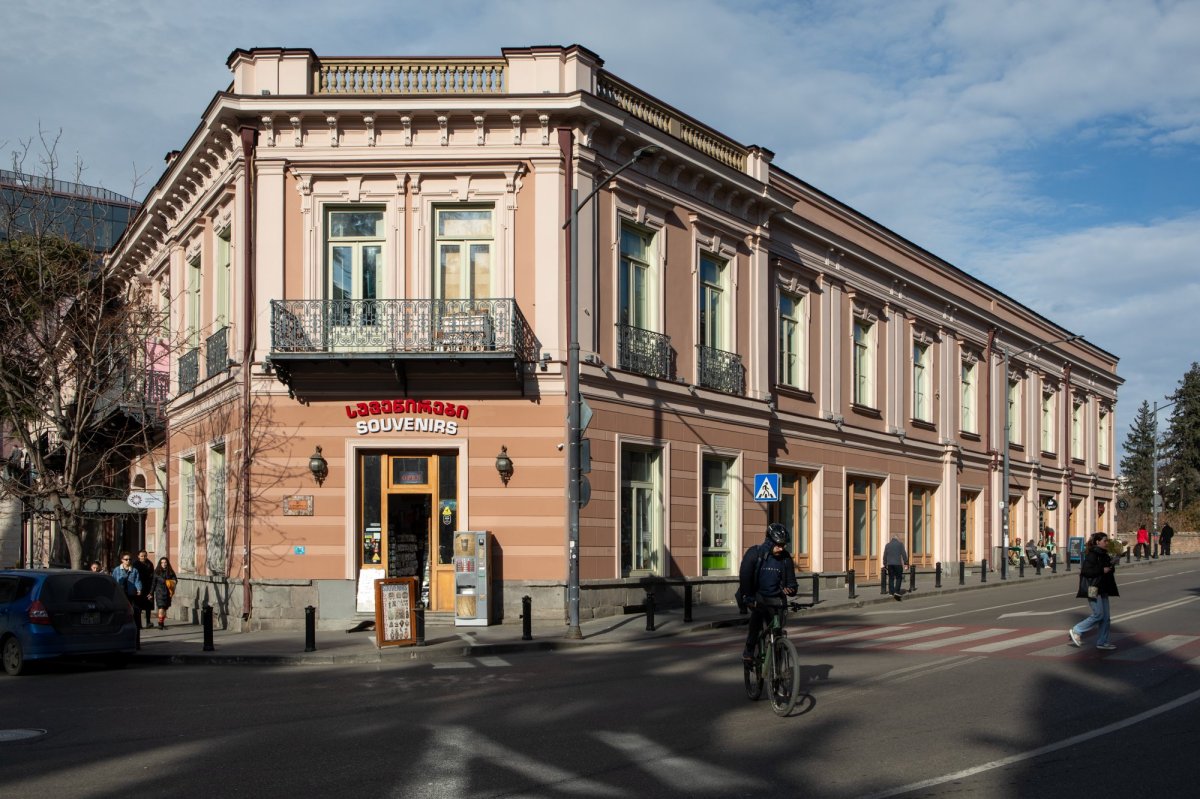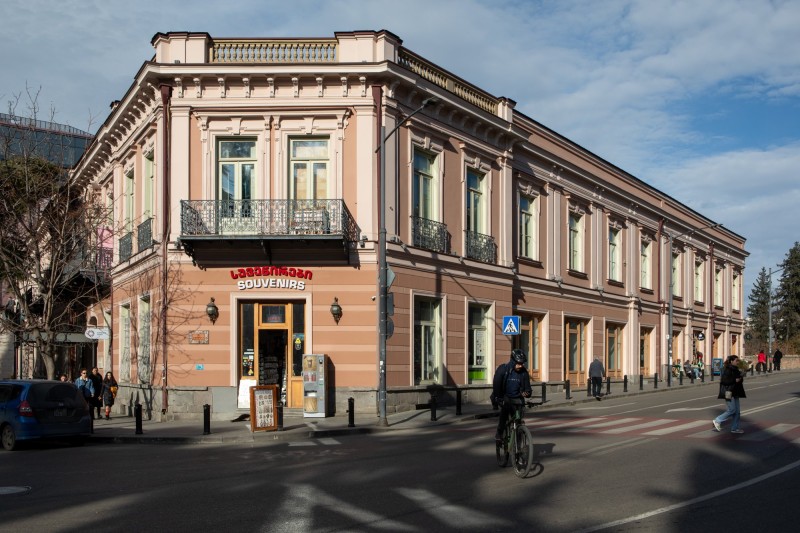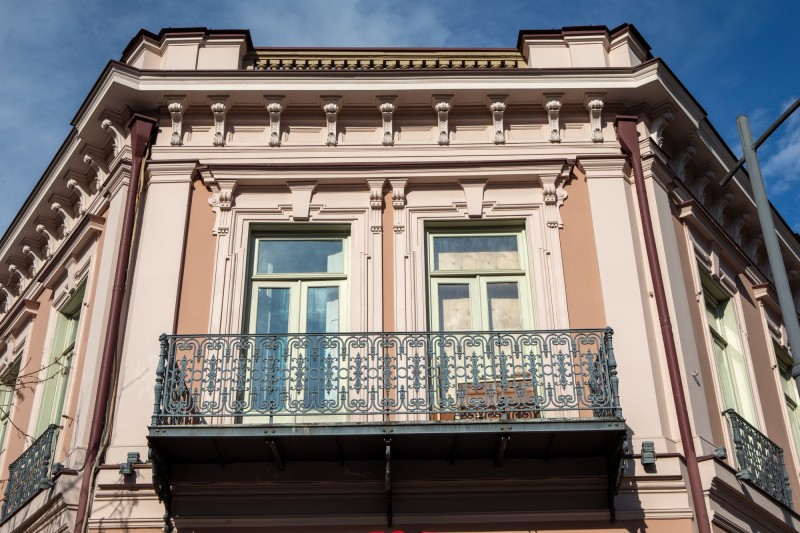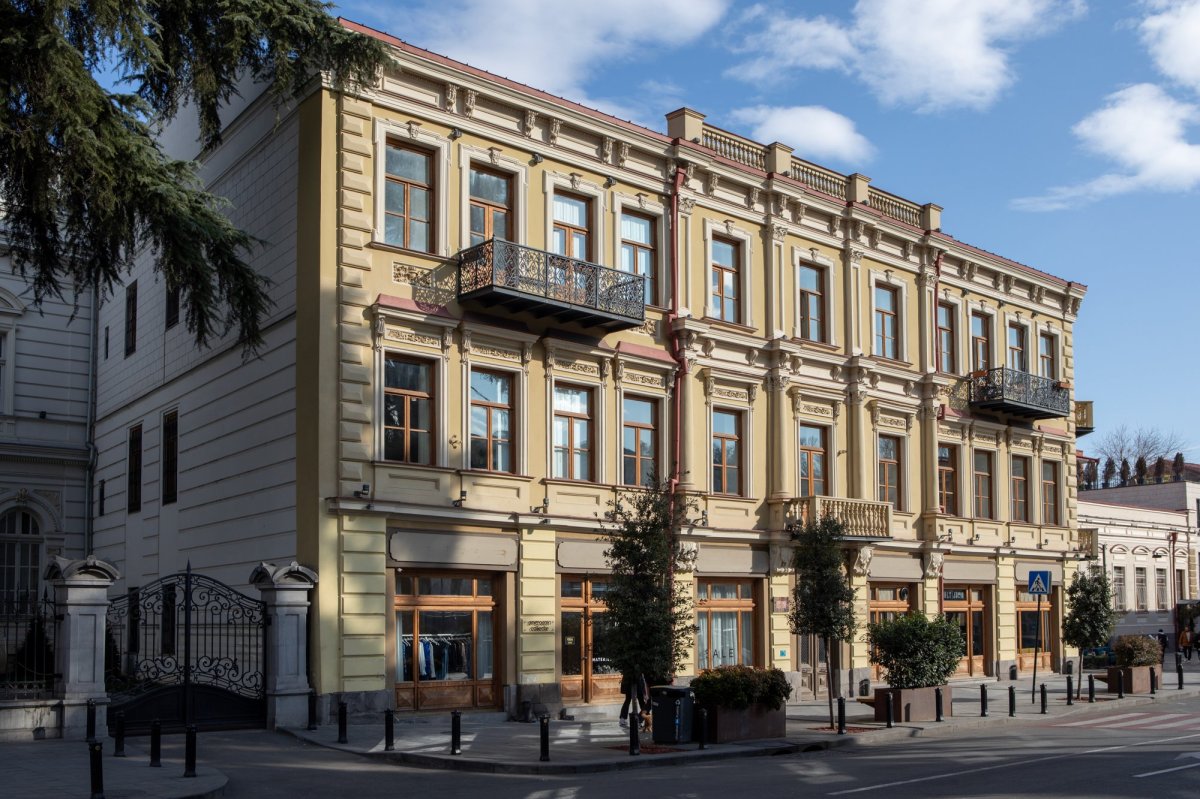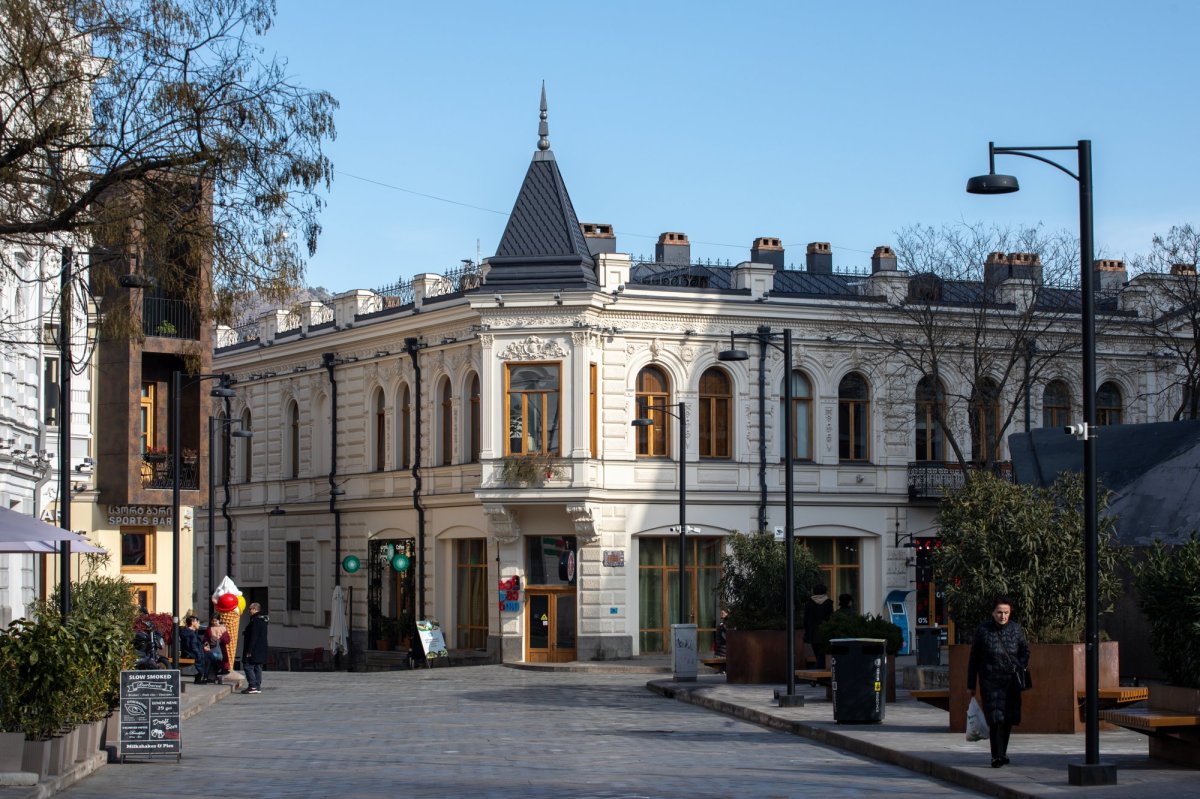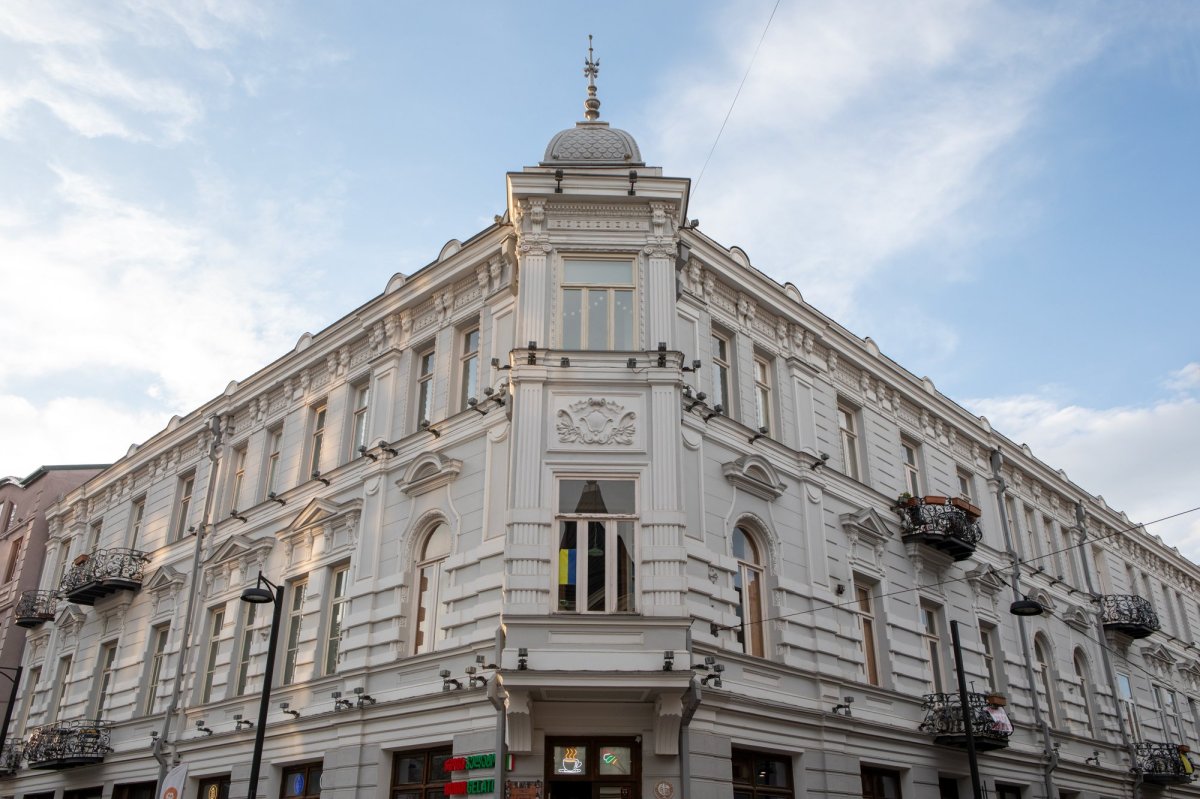
Information in details
The building located at 29, G. Atoneli St. is one of the important historical buildings of the city. Here, in the house belonging to the Mirzoevs, citizens of Tbilisi, in 1881, a Frenchman living in Georgia, Hector Delalande, opened the hotel "Grand Hotel", which is part of a long three-story building. There were shops, a pharmacy, a "Yakor" public office, etc. At first, the "Grand Hotel" enjoyed a great name and hosted distinguished guests. Then the service deteriorated and the hotel lost its old reputation. In the fall of 1888 arriving in Tbilisi, then a student, Galust Gulbenkian - lived here, later one of the richest men in the world, collector, and philanthropist. His stay at the hotel coincided with the visit of Emperor Alexander III to Tbilisi; Gulbenkian watched the ceremonial procession from the balcony of his "quite comfortable" room on the third floor. A mysterious murder that happened in 1901 in the Grand Hotel brought special notoriety. The muse of the Norwegian writer Knut Hamsun, the famous artist Edvard Munch, and the Swedish playwright August Strindberg, the wife of the Polish writer Stanislaw Przybyszewski - Dagny Yuel, was shot by the son of the owner of Chiatura manganese deposits - 25-year-old Vladislav Emeric in her room, He shot her dead and then killed himself. Around 1885, the hotel was named "Berlin", but in 1890, the old name was returned to the hotel. From that time, the guidebooks referred to the "Grand Hotel" among second-class hotels or at least furnished rooms. In 1900-1910, the owner of the hotel changed several times. After Sovietization, the "Grand Hotel" was handed over to the Red Army as a military residence. The building is one of the outstanding examples of Tbilisi eclecticism, the richly decorated facade of which uses the artistic-architectural motifs of the Baroque style. The "marking sign" of the main facade on Atoneli Street are the powerful Atlases sculpted from half the body of the first floor. The size of the Atlases placed on the narrow segments of the wall exceeds the scale of the walls and is perceived all the more impressive. Caryatids adorning the pilasters and half-columns of the Corinthian order can be found in the facade decoration. Worth of noting are the building's entrance and yard. The entrance hall features a black and white tiled floor and a stone staircase with an openwork iron railing. The surviving painting on the ceiling indicates that the vestibule would have been completely painted in ancient times. The courtyard facade of the house was opened with balconies with wooden railings, which created a pleasant textural contrast with the brick part of the entrance hall. Due to the steep slope of the terrain, the narrow facade on the side of Mtkvari has five floors. Old photographs show it with graceful wooden balconies and triple openings on every floor (the balconies on the lower two floors are now missing).


 თბილისი, Giorgi Atoneli Street N31
თბილისი, Giorgi Atoneli Street N31
 41.6999680, 44.8022287
41.6999680, 44.8022287

